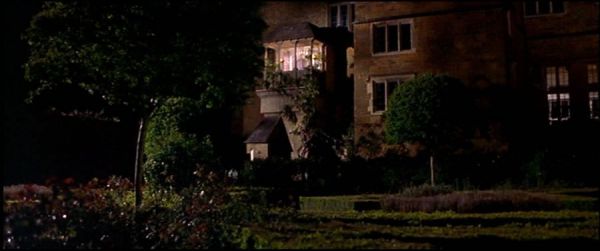Difference between revisions of "JCM412512/Mise-en-scene (Discussion)"
(→Discussion questions: added Mad Men lighting grid link) |
|||
| Line 13: | Line 13: | ||
#'''Group 1:''' What narrative meaning does the set design suggest? Or in other words, what narrative function does it serve? How does it help to establish the characters and their relationship? What are "objective correlatives" or "icons"? How might we see them in action in this scene, helping to build the narrative? | #'''Group 1:''' What narrative meaning does the set design suggest? Or in other words, what narrative function does it serve? How does it help to establish the characters and their relationship? What are "objective correlatives" or "icons"? How might we see them in action in this scene, helping to build the narrative? | ||
#'''Group 2:''' What narrative meaning does the costume design suggest? Or in other words, what narrative function does it serve? How does it help to establish the characters and their relationship? How might we see objective correlatives/icons in action in this scene, helping to build the narrative? | #'''Group 2:''' What narrative meaning does the costume design suggest? Or in other words, what narrative function does it serve? How does it help to establish the characters and their relationship? How might we see objective correlatives/icons in action in this scene, helping to build the narrative? | ||
| − | #'''Group 3:''' Describe the four basic characteristics of light in film (and television)--including specific instances of three-point lighting and high/low key lighting. What narrative meaning does the lighting design suggest? Or in other words, what narrative function does it serve? How does it help to establish the characters and their relationship? How might we see lighting's characteristics in action in this scene, helping to build the narrative? | + | #'''Group 3:''' Describe the four basic characteristics of light in film (and television)--including specific instances of three-point lighting and high/low key lighting. ([http://www.tcf.ua.edu/jbutler/MadMen/ See ''Mad Men'' lighting grid.]) What narrative meaning does the lighting design suggest? Or in other words, what narrative function does it serve? How does it help to establish the characters and their relationship? How might we see lighting's characteristics in action in this scene, helping to build the narrative? |
#'''Group 4:''' What narrative meaning does the actor movement (that is, "blocking") suggest? Or in other words, what narrative function does it serve? How does it help to establish the characters and their relationship? How might we see blocking in action in this scene, helping to build the narrative? If this were a silent film, what narrative meaning would be signified by blocking? | #'''Group 4:''' What narrative meaning does the actor movement (that is, "blocking") suggest? Or in other words, what narrative function does it serve? How does it help to establish the characters and their relationship? How might we see blocking in action in this scene, helping to build the narrative? If this were a silent film, what narrative meaning would be signified by blocking? | ||
Revision as of 15:57, 24 January 2011
UserName: tcfuser
Password: tcfuser
Much as Bordwell/Thompson do with Our Hospitality, we will examine the narrative functions of mise-en-scene in a short scene from Shakespeare in Love (John Madden, 1998). (See video clip.)
Plot summary
From http://www.imdb.com/title/tt0138097/plotsummary :
Romantic comedy set in London in the late 16th century: Young playwright William Shakespeare struggles with his latest work "Romeo and Ethel the Pirate's Daughter". A great fan of Shakespeare's plays is young, wealthy Viola who is about to be married to the cold-hearted Lord Wessex, but constantly dreams of becoming an actress. Women were not allowed to act on stage at that time (female roles were played by men, too), but dressed up as a boy, Viola successfully auditions for the part of Romeo. Soon she and William are caught in a forbidden romance that provides rich inspiration for his play.
Discussion questions
- Group 1: What narrative meaning does the set design suggest? Or in other words, what narrative function does it serve? How does it help to establish the characters and their relationship? What are "objective correlatives" or "icons"? How might we see them in action in this scene, helping to build the narrative?
- Group 2: What narrative meaning does the costume design suggest? Or in other words, what narrative function does it serve? How does it help to establish the characters and their relationship? How might we see objective correlatives/icons in action in this scene, helping to build the narrative?
- Group 3: Describe the four basic characteristics of light in film (and television)--including specific instances of three-point lighting and high/low key lighting. (See Mad Men lighting grid.) What narrative meaning does the lighting design suggest? Or in other words, what narrative function does it serve? How does it help to establish the characters and their relationship? How might we see lighting's characteristics in action in this scene, helping to build the narrative?
- Group 4: What narrative meaning does the actor movement (that is, "blocking") suggest? Or in other words, what narrative function does it serve? How does it help to establish the characters and their relationship? How might we see blocking in action in this scene, helping to build the narrative? If this were a silent film, what narrative meaning would be signified by blocking?
Bibliography
- Jeremy G. Butler, Television: Critical Methods and Applications (Routledge)
- David Bordwell and Kristin Thompson, Film Art: An Introduction (McGraw-Hill)
